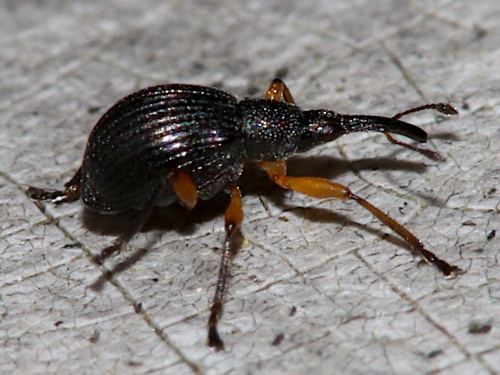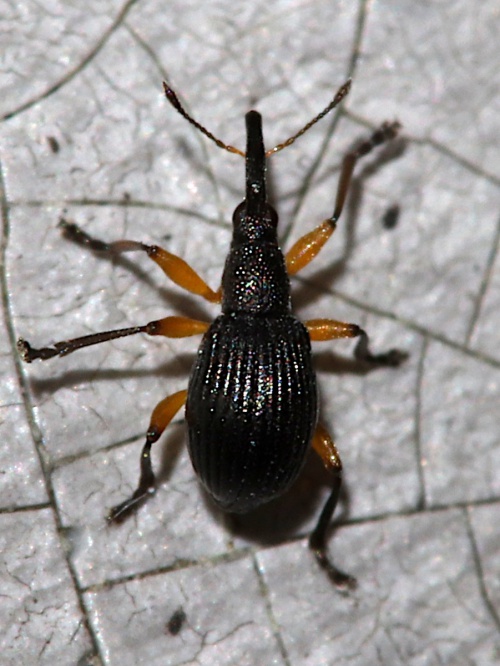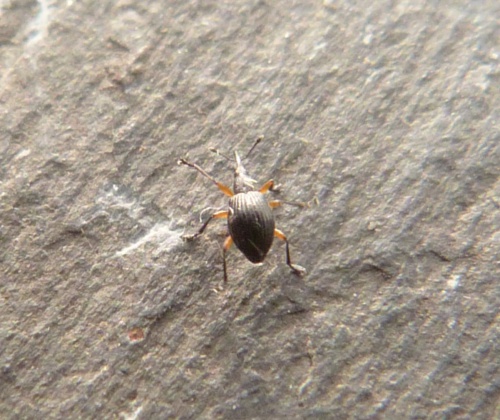Protapion trifolii
Apion aestivum
Body length, 1.7 to 2.1 mm, not including the head. Body, antennae, and tarsi are black. Fore coxae and trochanters are reddish or dark-reddish, distinctly darker than femora. Femora yellow-reddish. Mid and hind tibiae are black or dark-brown; fore tibia is lighter. There are other quite similar species and identification under magnification is necessary.
Unless identified by a recognised expert, photographic evidence is required and the specimen should be examined with a microscope. In the comments box, state the key or ID method used. Note the beetle's size and describe the identifying characters. It is advisable to retain the specimen in case further checks are needed.
Grassland where clover is present.
Mainly found from April to September.
Most records seem to come from the southern half of Britain although it is recorded from as far north as the Scottish Islands.
Fairly frequent in Leicestershire and Rutland.
Leicestershire & Rutland Map
Enter a town or village to see local records
MAP KEY:
Yellow squares = NBN records (all known data)
Coloured circles = NatureSpot records: 2020+ | 2015-2019 | pre-2015
UK Map
Species profile
- Common names
- Red Clover Seed Weevil, Clover Seed Weevil [Protapion trifolii]
- Species group:
- Beetles
- Kingdom:
- Animalia
- Order:
- Coleoptera
- Family:
- Apionidae
- Records on NatureSpot:
- 3
- First record:
- 17/05/2020 (Calow, Graham)
- Last record:
- 30/05/2022 (Comont, Richard)
Total records by month
% of records within its species group
10km squares with records
The latest images and records displayed below include those awaiting verification checks so we cannot guarantee that every identification is correct. Once accepted, the record displays a green tick.
In the Latest Records section, click on the header to sort A-Z, and again to sort Z-A. Use the header boxes to filter the list.




